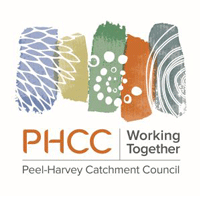Peel-Harvey catchment
The Peel-Harvey catchment covers an area over 10,000 square kilometres, extending from the coastal town of Mandurah, 150 kilometres east to the farming communities of Williams and Popanyinning (‘waterhole’ in Noongar language).
Three rivers connect the catchment to the Peel-Harvey Estuary – the Serpentine, Murray and Harvey rivers. The Serpentine and Murray rivers flow from the north and east into the Peel Inlet and the Harvey River flows from the south-east into the Harvey Estuary.
The Mediterranean climate has cool, wet winters and hot, dry summers with 80 per cent of rain falling between May and October. Climate change has led to reduced rainfall and so river flows to the estuary have reduced by approximately 33 per cent over the past 15 years.
Since European settlement in 1829, the catchment has been extensively cleared for agriculture and urban development. The natural river flows have been modified for 15 dams, flood mitigation and irrigation systems. A large network of artificial drains introduced in the 1930-1940s was designed to quickly clear water off the land during seasonal inundation. Rivers were de-snagged, deepened and straightened to accommodate the high flows resulting from the catchment modifications.
The parallel expansion in agriculture resulted in high nutrient loads delivered to the estuary. By the 1980s, nutrient concentrations were well beyond the capacity of the estuary to process, resulting in persistent noxious blue-green algae and macroalgae blooms, and fish kills.
While the construction of the Dawesville Channel successfully restored good water quality to the main body of the estuary, there is an ongoing role for active catchment management to ensure nutrient pollution from the catchment doesn’t again lead to degradation of the important ecological, social and economic values of the estuary and broader catchment.
Separation of nutrients by source
Beef farming contributes most of the nutrients to the Peel-Harvey estuary while only making up 11% of the catchment by area - about 62% of the nitrogen and 68% of the phosphorus.
Other major contributors of nutrients include dairy farming (7% of the nitrogen and 8% of the phosphorus) and horticulture (1% of the nitrogen and 7% of the phosphorus). These three land uses are all located on the coastal plain, which is wetter, has extensive artificial drainage and has large areas of soils with poor nutrient retention capacity.
Cropping is the second largest land use in the catchment making up 38% of the catchment by area. Cropping contributes 12% of the nitrogen but only 1% of the phosphorus to the estuary due to it’s location in the upper catchment. The comparatively lower phosphorus contribution from cropping is due to the higher retentive soils of the upper catchment.

